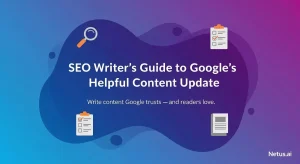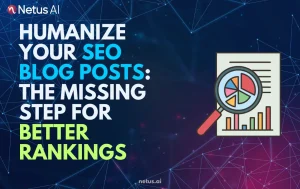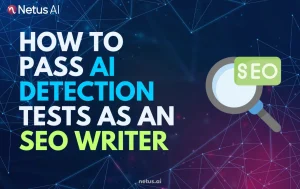Reducing Plagiarism: How to Cite an Online Article Efficiently and Accurately

Ashley Merit
Content writer and editor for Netus.AI
Table of Contents
Know-How to Cite an Online Article in Texts
Reducing Plagiarism. The digital age has made publishing works online more accessible and cost-effective, making proper citation of these sources essential for any writer or researcher. Citing online articles is important not only for avoiding plagiarism but also for providing the readers with the necessary information to locate the original sources within the bibliography.
To successfully credit all sources in a text, writers need to be familiar with different citation methods, such as APA in-text citation and MLA citations. By acknowledging their sources, writers ensure the integrity of their work and avoid potential plagiarism.
In research papers and academic projects, it is crucial to reference all online articles, journals, images, graphs, and statistics that have been used. A well-structured citation addresses essential questions such as who, what, when, and where.
Here are some important steps to follow when citing an online article in texts:
- In-text citation: Credit the original author within the body of your text with a proper in-text citation, which includes the author’s name and the publication date.
- Paraphrasing: Rewrite the original text in your own words, maintaining its meaning while ensuring that your text remains distinct from the original source.
- Quotations and block quotes: Quote the source directly by using double quotation marks and mention the author’s name, followed by the page or paragraph number. For longer quotes (typically of 40 words or more), use block quotes without quotation marks and start a new line.
- Multiple sources: When citing multiple sources within the same paragraph or sentence, provide a separate in-text citation for each source to indicate the origin of ideas or content.
For writers and publishers who prefer using MLA format to cite online articles, it offers the advantage of presenting information on how the source was accessed, further ensuring the credibility of their work.
By employing proper citation methods and adhering to the guidelines, writers can add credibility to their work and prevent instances of plagiarism. In addition, these practices promote ethical research and academic integrity.
Why is the Citation of an Online Article Important?
The spread of online articles has made it easy for students and writers to access and utilize a vast array of resources in their work. As the use of these materials increases, so does the importance of proper citation. Incorporating accurate citations of online articles into one’s writing serves several key purposes:
- Acknowledging the original author: Citing an online article gives credit to the creator of the work and acknowledges the ideas that have been incorporated into one’s own writing.
- Providing context for the reader: Citations help readers gain a better understanding of the topic and ideas used in the article. Additionally, they enable readers to easily locate the original sources and references utilized by the writer.
- Preventing plagiarism: A consistent and precise citation practice allows writers to avoid allegations of plagiarism, which can result in serious consequences in the realm of academic writing.
In order to maintain the integrity of their work and respect the efforts of others, writers must diligently apply quotation marks to any content taken from external sources, such as journal articles and online resources. By doing so and by citing these sources appropriately, writers effectively demonstrate their commitment to responsible and ethical academic writing.
How to Cite an Individual Page?
When using information from a specific webpage, it’s crucial to know how to cite it accurately. This involves two types of citations: brief in-text citations and a complete citation in the reference list.
For in-text citations, it’s essential to include the author’s last name, page title, and publication date. No need to add the URL or web address in this case. If the author’s name is not available, use the page title and publication date instead.
The complete citation in the reference list should contain essential details such as the author’s name, page title, page number, publication date, and edition (if applicable). Citations may vary based on the citation style being used, but these are the general elements to include.
Here’s a helpful summary of what to consider when citing an individual webpage:
- Author: Include the author’s last name when available.
- Title of the page: Include the page title in the citation. If it’s not available, use the full website name.
- Date of publication: Always include the publication date in both in-text citations and the reference list.
- Organization name: If the webpage is part of a larger website or organization, ensure to include its name.
By including the relevant elements in your citation, you will be able to accurately cite an individual webpage, providing credibility to your work, and avoiding plagiarism. Just remember to follow the specific formatting guidelines based on the citation style you are using.
How to Cite a Website?
When citing a website, it’s essential to differentiate between citing the entire website and only a specific webpage. When citing the whole website, use the site’s name as the main reference. In-text references can include the website name enclosed in brackets. The full citation should encompass the website name and the date when you visited it.
For citing a single webpage, the same process applies; however, you will also need to consider the URL, website name, access date, and other elements such as electronic sources, print sources, blogs, social media, images, graphs, and tables. Remember, properly attributing sources helps to avoid plagiarism and maintain the credibility of your work.
How to Cite an Online Journal?
When citing an online journal article, it’s essential to include specific details to avoid plagiarism. Start with the author’s name, listing their surname followed by initials. Next, note the publication year, article title, and relevant issue information like volume, part number, season, or month. Don’t forget to mention the page number as well.
In case of a special edition or issue, make sure to specify this information. Utilizing proper formatting elements, such as tables, lists, bold, and italic text, can enhance the presentation of your citation. Remember, adopting a consistent citation method for online journal articles is crucial for maintaining a confident, knowledgeable, and clear writing style in the third person point of view.
Citing an Online Article
When citing online articles, students must include specific information about the referenced material. Correct citations typically include the author’s name, publication date or last updated date, page title (in italics), sponsor of the site (if available), access date, and the URL.
1. APA Citation Style
The APA citation style uses an author-date format, requiring the name of the author and the publication date. For online articles, the pattern remains the same. If the article does not have a page number, students can reference the number of paragraphs. The general format for APA style is as follows:
Author's last name, First initial. (Date of Publication). Title. URL
For websites: Author's last name, First initial. (year, month, date of publication). Title of the webpage. Name of the site. URL
For blog posts: Author's last name, First initial. (year, month, date of publication). Title of the blog post. Title of the blog. URL
2. MLA Citation Style
The MLA citation style includes the author’s name, source title, publication date, and additional information about the work based on the source type. For online articles, add the URL or website address to the general format. The general format for MLA style is as follows:
Author's last name, author's initial name. "Title of the work." Name of the journal/webpage title/blog post title, other information like volume, edition, publication date, page number, URL.
3. Chicago Citation Style
The Chicago citation style is in its 16th edition and assists researchers in providing proper citations. The Chicago style requires the author’s details, the title of the book or article, the title of the newspaper, publication year, publication month and date, publisher, city of publication, access date, page numbers, URL, or name of the database. The general format for Chicago style is as follows:
Author's last name, author's initial name. "Title of the work." Title of the article. Date published/last modified/last accessed. URL
Utilizing Plagiarism Checkers for Online Articles
To help identify instances of plagiarism in online articles, educators can employ plagiarism detection tools. If a student’s work includes content from online resources without proper citations, these plagiarism checker tools can detect the uncredited content.
Before scanning for plagiarism, it is crucial to perform a grammar check, ensuring accurate results. Plagiarism detection tools, such as Scribbr and Turnitin, generate comprehensive reports on source material and references used in articles.
Educators can then receive the URLs of online resources used without citation by students. This information is invaluable in detecting plagiarism and ensuring academic integrity. If a student uses a resource without proper citation, institutions may consider it an act of plagiarism. Utilizing plagiarism checkers and citation generators like Zotero or EndNote can help avoid these situations and maintain academic honesty.
Frequently Asked Questions
How do I properly cite an online article in APA format to prevent plagiarism?
To correctly cite an online article in APA format, include the author’s name, publication date, page or article title, website name, and URL. If there is no author, start with the article title, and if the page might change, add a retrieval date. More information can be found at Scribbr.
What techniques can I use to paraphrase online content and make sure it’s original?
To effectively paraphrase online content, read the original source thoroughly, put it aside, and then write the main ideas in your own words. You can also use a paraphrasing tool to help rephrase the text, but remember to credit the original author with an in-text citation.
Can you give specific examples of citing web articles to reduce plagiarism risk?
For an MLA citation of a webpage, list the author’s name, the title of the page in quotation marks, the website name (in italics), the publication date, and the URL. An example can be found at the Purdue OWL.
What are the most effective methods for preventing plagiarism when using online articles?
Some primary strategies for avoiding plagiarism while utilizing online articles include keeping track of your sources, paraphrasing or quoting correctly (adding your own ideas), crediting the original author with in-text citations, and including references. Find more tips at Harvard Guide to Using Sources.
How does employing a plagiarism checker contribute to proper online source citations?
A plagiarism checker helps ensure proper citation by identifying any instances of similarities between your text and other sources. It highlights text that may require citations or revisions to avoid unintentional plagiarism.
What approaches should students follow to steer clear of plagiarism when integrating online articles into their projects?
Students can prevent plagiarism by carefully tracking their sources, accurately paraphrasing and quoting, ensuring proper in-text citation, and including a comprehensive list of references. Additionally, using a plagiarism checker can help catch any instances of unintentional plagiarism before submitting the final work.

Why Google’s ‘Who, How, Why’ Framework Matters for EEAT | NetusAI
Why Google’s ‘Who, How, Why’ Framework Matters for EEAT AI can create articles in seconds. But here’s the truth: speed is not enough. Google wants

Google’s Helpful Content Update: An SEO Writer’s Guide | NetusAI
SEO Writer’s Guide to Google’s Helpful Content Update Keeping up with Google’s algorithm changes can feel like a relentless game of whack-a-mole. Just when you

AI Content and SEO in 2025: Is It Really Safe? | NetusAI
Can AI Content Be Safe for SEO in 2025? Let’s start with the question of keeping every content strategist, SEO pro and blogger awake at

How To Avoid AI Detection and Stay Under the Radar | NetusAI
How to avoid AI detection and stay under the radar? Learn about the problems of wrong AI detection and how to protect yourself from being

Why Humanized SEO Blog Posts Rank Higher | NetusAI
Humanize Your SEO Blog Posts: The Missing Step for Better Rankings You’ve done everything by the book. Your keyword research is impeccable. Your meta descriptions

Passing AI Detection as an SEO Writer: Tips & Tricks | NetusAI
How to Pass AI Detection Tests as an SEO Writer Let’s paint a familiar picture. You’ve just finished a blog post. The headline is sharp,
